What Are the Most Common Plastic Surgeries for the Face?
Facial Plastic Surgery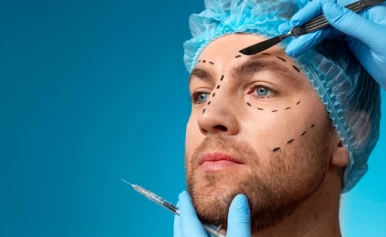
Is it possible to alter one's appearance and, by extension, life through Facial Plastic Surgery? This intriguing question opens the gateway to a comprehensive exploration of various facial surgeries such as Rhinoplasty, Blepharoplasty, Rhytidectomy, and more.
Within these pages lies a wealth of knowledge, from the technicalities of each procedure to the emotional and psychological impacts they carry.
Join us at Raadina Health Blog as we delve deeper into this fascinating world, offering insights and guidance for those considering their journey in facial transformation.
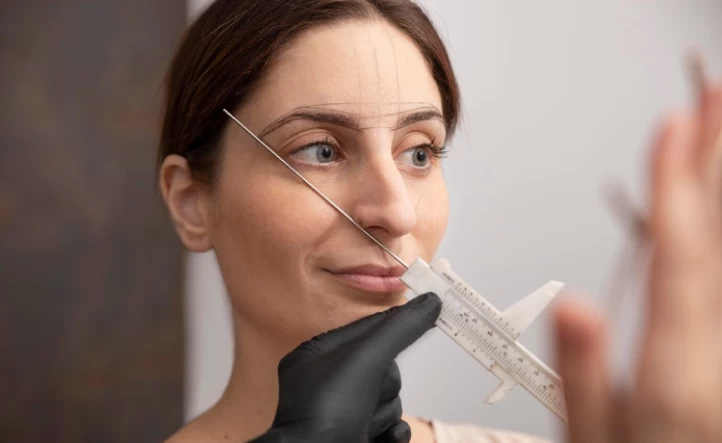
Understanding the Basics of Facial Plastic Surgery
Facial Plastic Surgery represents a transformative domain within medical science, focusing on enhancing, reconstructing, or altering facial features. This specialized field merges the aesthetics of cosmetic procedures with the practical aspects of reconstructive surgery, catering to a wide array of facial modifications, from cosmetic enhancements to correcting congenital or trauma-induced anomalies.
Evolution of this surgery
- Early Advancements in Techniques: The roots of this surgery trace back to ancient civilizations. Initial methods, though primitive, were foundational for the field's evolution. These early techniques focused on basic reparative procedures for facial injuries.
- Modern Developments and Innovations: This plastic surgery has evolved with groundbreaking surgical and technological advancements. Modern surgeons leverage cutting-edge equipment and refined surgical strategies, aiming for aesthetically pleasing and functionally practical outcomes.

Rhinoplasty: Reshaping Your Features
Rhinoplasty, commonly known as a nose job, is a surgical procedure that reshapes the nose to improve its appearance and function. It can address many concerns, from correcting structural defects to enhancing aesthetic features, boosting self-confidence, and improving overall facial harmony.
Understanding Rhinoplasty
Rhinoplasty is a personalized procedure that involves altering the shape, size, and angle of the nose. It can address various concerns, including:
- Functional Issues: Correcting breathing problems caused by a deviated septum, nasal obstruction, or structural abnormalities;
- Cosmetic Enhancements: Refining the shape and size of the nose to align with facial proportions, improving symmetry and aesthetic balance;
- Post-Trauma Reconstruction: Repairing nasal deformities caused by injuries or accidents.
Types of Rhinoplasty
- Open Rhinoplasty: This technique involves an incision across the base of the nose, providing a wider view of the nasal structures. It allows for more extensive reshaping and is often used for complex cases;
- Closed Rhinoplasty: This technique uses incisions inside the nostrils, minimizing visible scarring. It's suitable for less complex procedures.
Septoplasty: Breathing Easy with a Straightened Septum
Septoplasty is a surgical procedure that corrects a deviated septum. In this condition, the wall of cartilage and bone that divides the nasal passages (the septum) is crooked or off-center. This condition can lead to various problems, affecting both breathing and overall well-being.
Understanding a Deviated Septum
The nasal septum is a dividing wall that keeps the two nasal passages separate. When it's deviated, one passage is often narrower than the other, obstructing airflow and causing various symptoms.
The Septoplasty Procedure
During a septoplasty, the surgeon will:
Using specialized instruments, the surgeon will carefully reshape the deviated septum, creating a straight and symmetrical passageway;
If necessary, the surgeon may remove any bony or cartilaginous spurs or projections contributing to the obstruction.
Blepharoplasty: A Detailed Look
Blepharoplasty, or eyelid surgery, is critical to facial plastic surgery. This procedure aims to refine the appearance of the eyelids and is pivotal in facial rejuvenation. It can address issues such as drooping eyelids, under-eye bags, and wrinkles that often contribute to a tired or aged look.
Exploration of Eyelid Surgery Techniques
- The techniques in blepharoplasty vary, depending on whether the focus is on the upper eyelids, lower eyelids, or both. Upper eyelid surgery typically involves removing excess skin and fat to alleviate drooping that can impair vision. Lower eyelid blepharoplasty often targets removing under-eye bags and tightening the skin to reduce wrinkles and puffiness.
- Surgeons employ meticulous techniques to ensure minimal scarring and natural-looking results. The incisions are usually made along the eyelids' natural lines, which helps conceal surgical marks.
Patient Demographics and Typical Use Cases
- Individuals of various age groups seek Blepharoplasty, although it's prevalent among middle-aged and older adults who seek to reverse the signs of aging.
- Younger patients might also opt for this surgery due to genetic predispositions to under-eye bags or drooping eyelids.
- This procedure is about aesthetics and functionality, as it can significantly improve peripheral vision in individuals with severely sagging eyelids.
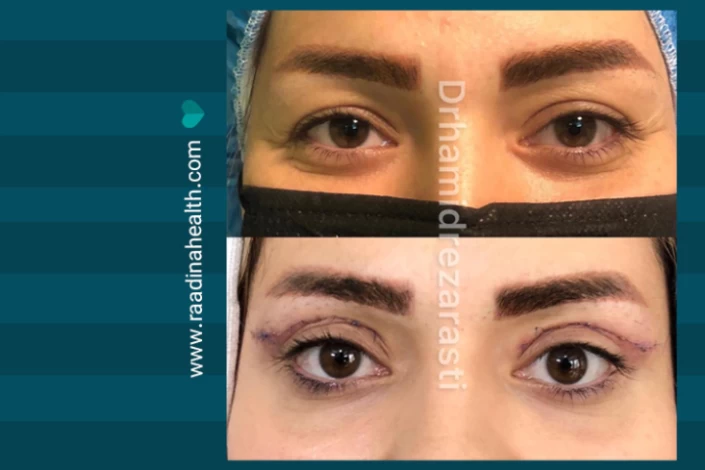
Rhytidectomy: The Art of Facelift
Rhytidectomy, better known as a facelift, is a cornerstone procedure in facial plastic surgery designed to reverse the signs of aging. It tightens the skin and underlying muscles and tissues to provide a more youthful facial appearance.
Explanation of Facelift Procedures
- A facelift addresses sagging facial skin, jowls, and sometimes the neck area. The procedure involves removing excess skin, tightening underlying tissues, and re-draping the skin on the face and neck.
- Surgeons may combine a facelift with rhinoplasty or blepharoplasty for more comprehensive facial rejuvenation.
Steps Involved in a Typical Rhytidectomy
- Initial Consultation: The journey begins with a detailed consultation where the surgeon assesses the patient’s skin texture, bone structure, and underlying health conditions. This stage often includes discussing the patient's expectations and explaining the realistic outcomes of the surgery.
- Surgical Procedure: The facelift surgery can take several hours and is typically performed under general anesthesia. Incisions are strategically made along the hairline or behind the ears to minimize visible scarring. The surgeon then lifts and repositions the facial tissues and skin to achieve the desired contour.
- Recovery Process: Post-surgery, patients usually experience swelling and bruising, which subsides over time. Recovery may take several weeks, during which patients are advised to avoid strenuous activities. Follow-up appointments are crucial for monitoring the healing process and ensuring results.
Facelifts, part of cosmetic and reconstructive surgery, enhance physical appearance and often boost self-confidence and psychological well-being. They are a testament to the intricacies and advancements in facial plastic surgery.
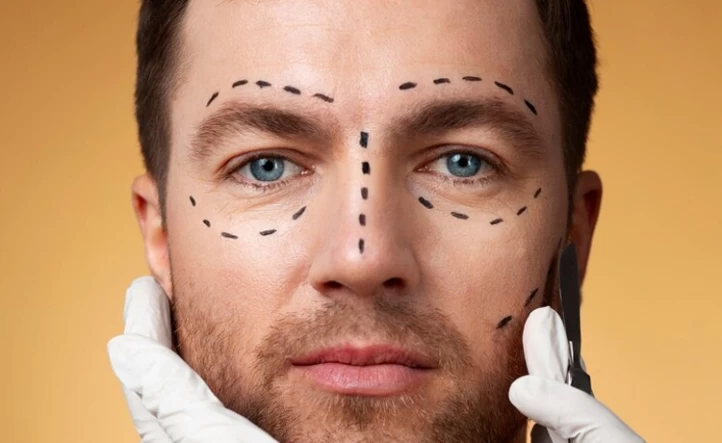
Otoplasty: Reshaping the Ears
Otoplasty, or ear surgery, is a significant procedure within This plastic surgery that focuses on altering the shape, size, or position of the ears. Often undertaken for cosmetic reasons, it also addresses functional issues related to ear structure.
Overview of Ear Surgery Techniques and Objectives
- Otoplasty techniques vary depending on the patient's specific needs and anatomy. Commonly, it involves reshaping the ear cartilage through strategic incisions. Surgeons may employ techniques to reposition protruding ears closer to the head.
- The primary objective of otoplasty is to create a natural ear appearance that harmonizes with other facial features. For some, this surgery is vital for boosting self-esteem, especially in children and teenagers who may face bullying due to their appearance.
Double Chin Liposuction: Sculpting a Defined Jawline
A double chin, also known as submental fullness, can be a frustrating aesthetic concern for many individuals. While diet and exercise can help with overall weight loss, they often don't target this specific area. Double chin liposuction offers a targeted solution, removing excess fat under the chin and creating a more sculpted, defined jawline.
Double Chin Liposuction Procedure
Double chin liposuction is a minimally invasive procedure that involves removing excess fat from beneath the chin using a thin cannula (tube) inserted through small incisions. The procedure is typically performed under local anesthesia, with sedation as an option for comfort.
Candidates for Double Chin Liposuction
- People with a noticeable layer of fat beneath the chin, even with a healthy weight;
- Candidates with good skin elasticity are more likely to achieve optimal results;
- Individuals should have realistic expectations about the procedure's potential outcome and understand that it is not a weight loss solution.
Hair Replacement Surgery: Understanding the Options
Hair replacement surgery, also known as hair transplant surgery, is a cosmetic procedure that aims to restore hair growth in areas of the scalp where hair loss or thinning has occurred. This surgical technique has gained popularity recently as an effective solution for individuals struggling with hair loss and seeking to regain a fuller, natural-looking head of hair.
Hair replacement surgery involves transplanting hair follicles from donor areas, typically located at the back or sides of the scalp, to balding or thinning areas on the scalp. The success of hair replacement surgery depends on various factors, including the surgeon's skill and experience, the quality of the donor's hair, and the patient's overall health and lifestyle habits.
Types of Hair Replacement Surgery
Hair replacement surgery primarily involves two techniques:
- Follicular Unit Extraction (FUE Surgery): Individual hair follicles are extracted from the donor area, usually the back or sides of the scalp, and transplanted to the recipient area. FUE technique leaves minimal scarring and allows for a natural-looking result;
- Follicular Unit Transplantation (FUT Surgery): A strip of scalp is removed from the donor area, and individual hair follicles are extracted from the strip and transplanted to the recipient area. The FUT technique typically leaves a linear scar at the donor site.
Candidates for Hair Replacement Surgery
While hair replacement surgery can significantly improve hair density and appearance, realistic expectations about the results are essential. Not all people are suitable candidates for hair replacement surgery, and a thorough consultation with a qualified surgeon is necessary to determine eligibility and discuss treatment options.
Hair replacement surgery is generally suitable for people experiencing:
- Male and Female Pattern Baldness (Androgenetic Alopecia): This is the most common cause of hair loss, affecting both genders.
- Alopecia Areata: This autoimmune condition causes patchy hair loss in various body areas.
- Scarring Alopecia: This hair loss occurs due to trauma or infection, resulting in bald patches.
In addition, hair transplantation candidates should have sufficient healthy hair in the donor area to support the transplant.
The Role of Non-Surgical Procedures in Facial Enhancement
Non-surgical procedures in plastic surgery have gained immense popularity. They offer significant aesthetic improvements without requiring invasive surgeries. These methods are often preferred for minimal downtime, lower risk of complications, and immediate results.
- Botox and Fillers: Botox injections are widely used to reduce the appearance of facial wrinkles. They temporarily paralyze muscles, smoothing out lines and creases. On the other hand, dermal fillers add volume to facial tissues, enhancing contours and reducing signs of aging.
- Laser Treatments: Laser technology in facial enhancement targets various skin concerns. It includes laser resurfacing to improve skin texture, tone, and appearance and laser therapy for addressing skin pigmentation and vascular lesions.
- Chemical Peels: These involve applying a chemical solution to the skin, which exfoliates and eventually peels off, revealing regenerated, smoother, and less wrinkled skin.
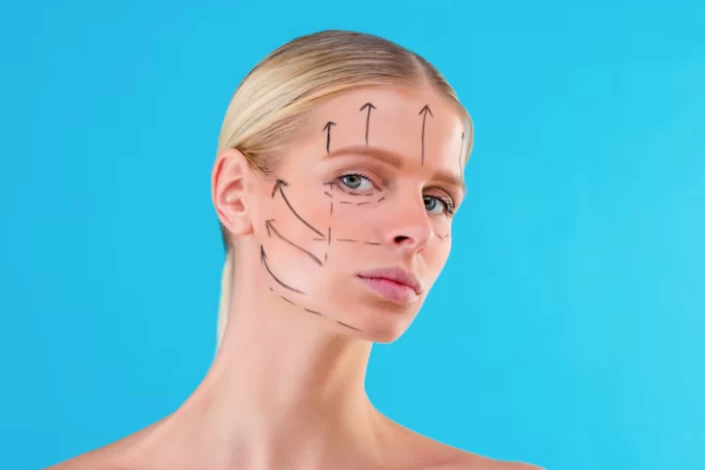
Step-by-Step Guide to Preparing for Your Facial Plastic Surgery
Facial plastic surgery involves several critical steps to ensure the best possible outcomes. Understanding and diligently following these steps is essential for a smooth and safe surgical experience.
- Initial Consultation: The first step involves meeting with a plastic surgeon to discuss goals, expectations, and potential procedures. This session is crucial for developing a personalized treatment plan. It's a time to ask questions, discuss concerns, and understand the risks and benefits of the surgery.
- Medical Evaluation: Before surgery, a thorough medical evaluation is conducted. This may include lab tests, a physical examination, and a medical history review. It is essential to disclose any medications, supplements, or underlying health conditions.
- Pre-Operative Instructions: Patients receive detailed pre-operative instructions, which may include guidelines on eating, drinking, smoking, and taking or avoiding certain medications. Adhering to these instructions is vital for minimizing surgery risks and enhancing recovery.
Post-Operative Care: What to Expect After Facial Plastic Surgery
After this surgery, patients must adhere to post-operative care instructions to ensure a successful and smooth recovery. This phase is as crucial as the surgery, significantly impacting the results and healing process.
Immediate Post-Surgery Care
Patients are usually observed in a recovery area immediately after surgery. Pain management and monitoring for any immediate post-operative complications are critical during this time. Patients are often given specific instructions on how to care for the surgical site, medications to apply or take orally, and when to return for a follow-up appointment.
- Home Care Guidelines: Once at home, patients are advised to rest and avoid strenuous activities. Keeping the head elevated, applying cold compresses, and taking prescribed medications can significantly reduce swelling and discomfort.
- Follow-up Appointments and Suture Removal: Follow-up visits are scheduled to monitor healing. Depending on the procedure and individual healing process, sutures are typically removed within a week after surgery.

The Risks and Complications of Facial Plastic Surgeries
Like any surgical procedure, plastic surgery involves risks and potential complications. Patients must understand these risks to make informed decisions.
Surgeons employ various strategies to minimize risks, including thorough preoperative assessments and advanced surgical techniques. Postoperative care is also crucial in ensuring a smooth recovery and mitigating complications. These procedures are suitable for minimizing the risks of this surgery.
Plastic Surgery in Iran
Iran has become a popular destination for medical tourism, particularly for plastic surgery procedures. One factor that has contributed to the popularity of plastic surgery in Iran is the availability of skilled and experienced surgeons. Iran has a well-established medical infrastructure, and many plastic surgeons in the country have received training and education in reputable institutions both domestically and internationally. This has helped to build trust in the quality of plastic surgery procedures available in Iran.
Additionally, the cost of plastic surgery in Iran is often more affordable compared to other countries, making it an attractive option for individuals seeking cosmetic procedures. This has led to a growing trend of medical tourism, with people from other countries traveling to Iran for plastic surgery due to the combination of high-quality care and relatively lower costs.
Furthermore, the social acceptance of plastic surgery in Iran has played a role in its popularity. Unlike some other cultures where cosmetic procedures may be stigmatized, plastic surgery is generally accepted and even celebrated in Iranian society. This has contributed to a more open and supportive environment for those considering or undergoing plastic surgery.
FAQs About Facial Plastic Surgeries
1) What is Facial Plastic Surgery?
Plastic Surgery is a specialized field that focuses on reshaping structures in the head and neck, such as the nose, ears, chin, cheekbones, and neckline. It can be performed for reconstructive purposes, cosmetic enhancement, or to correct birth defects.
2) What is the difference between Cosmetic Surgery and Reconstructive Surgery?
Cosmetic Surgery is performed to reshape typical structures of the body to improve appearance and self-esteem. In contrast, Reconstructive Surgery is performed on abnormal structures of the body caused by congenital defects, developmental abnormalities, trauma, infection, tumors, or disease.
3) What is the recovery process like after Facial Plastic Surgery?
The recovery process varies for each patient and procedure. However, most facial cosmetic operations have minimal discomfort post-operatively.
4) Where are Facial Plastic Surgery procedures performed?
Most elective surgeries are performed on an outpatient basis. However, if emergency hospitalization becomes necessary, it’s essential to ensure that the facility is certified by a recognized healthcare accreditation organization.





No reviews
Your comment